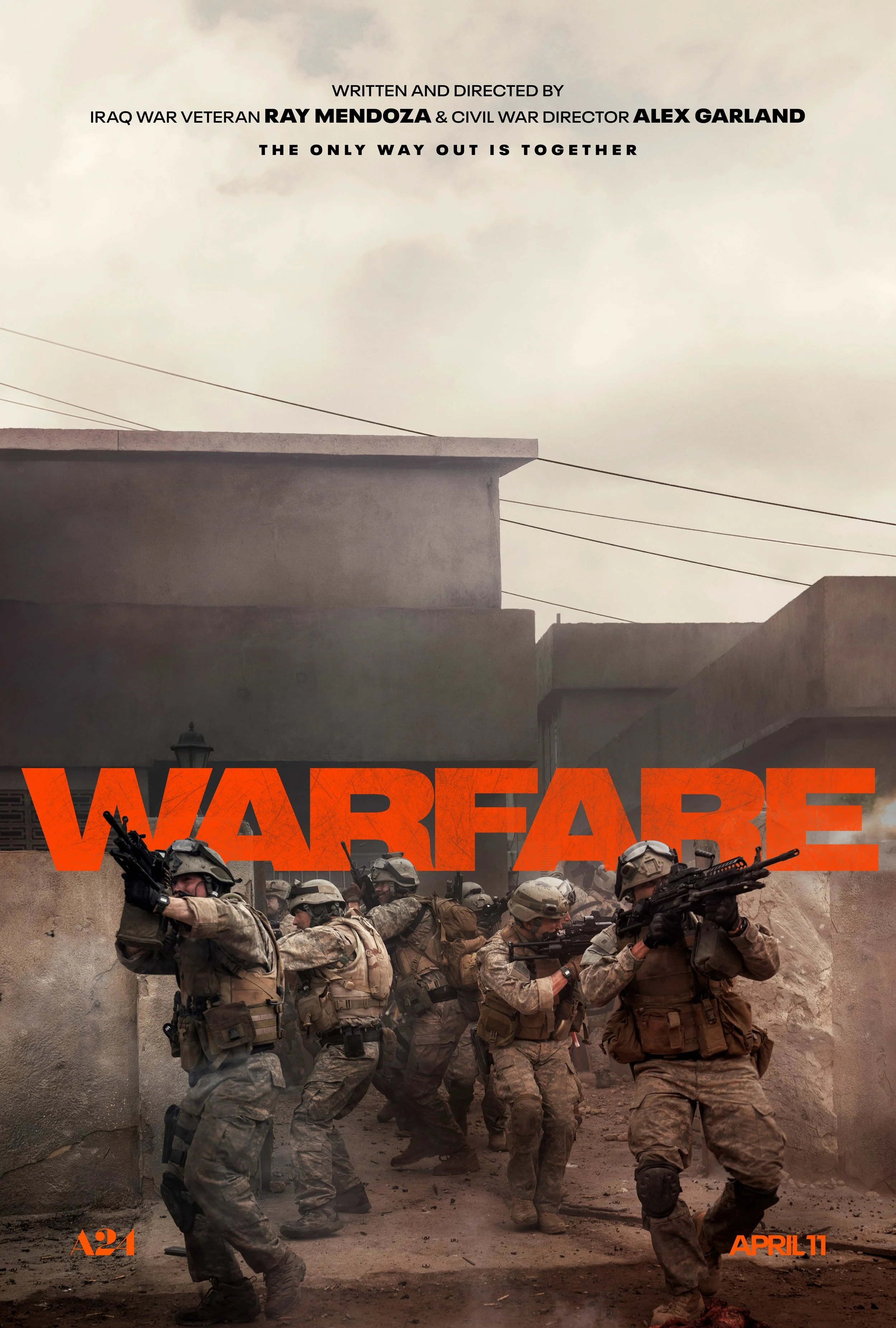To Forgo Truffaut
Film poster courtesy of A24.
The audience is not expected to enjoy Warfare. We are expected to endure it.
Alex Garland’s latest film, co-directed with former Navy SEAL Ray Mendoza, is somewhere between the haunted memoryscapes of Son of Saul and the relentless visceral nature of Dunkirk. It offers no refuge, no catharsis, and, most crucially, no meaning. The film unfolds over 90 real-time minutes as the hyperrealistic sensibilities of Garland and Mendoza take over.
Warfare is not a film in the conventional sense. There are barely any characters to speak of, no arcs, and no anchors. We’re embedded with a SEAL squad on deployment, but these men are not introduced or developed. They are silhouettes, pulses, steady gazes, and trembling fingers on triggers.
The film offers little narrative thread upon which to cling, only a montage teetering toward inevitable collapse. It feels like the film has taken Eisenstein’s theory of montage as a creator of meaning and turned it against the viewer, not to create meaning but to destroy one’s expectations of a broader narrative unfolding. This is not empathy but immersion. The point is not to watch someone suffer; it is to feel the conditions of war under which personhood begins to unravel…
Read the full article on the Chicago Maroon
